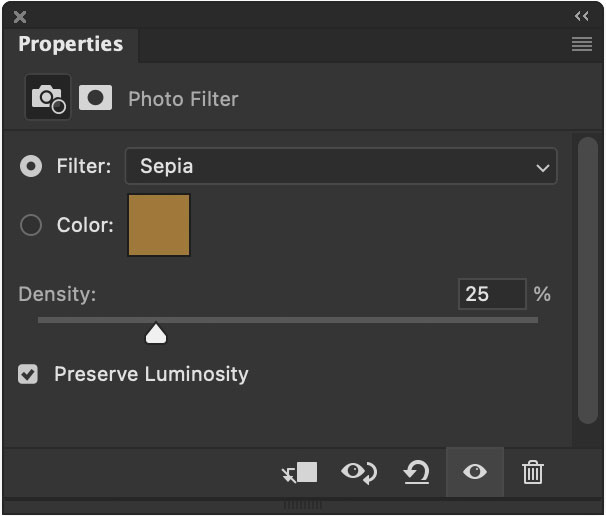EXCERPT page containing first few paragraphs. 2024-05-10 13:35:58
UA_SEARCH_BOT_compatible_botmozilla/5.0 applewebkit/537.36 (khtml, like gecko; compatible; claudebot/1.0; +claudebot@anthropic.com) @ 3.137.175.113
For full access, subscribe here. Or click title to login. ![]()
Tinting Monochrome Images
A slight tint to a monochrome image can add a mood to an image. Most commonly one might see a sepia tint, particularly on vintage photos, or a cyan tint to mimic an old cyanotype.
Method 1: apply a tint over an monochrome image
This method is trivially simple: create a Color Filter layer over the existing monochrome image.
Article continues for subscribers...
Diglloyd Monochrome is by yearly subscription. Subscribe now for about 8 cents a day.
BEST DEAL: get full access to ALL 8 PUBLICATIONS for only 68 cents a day ($249.95)!
Diglloyd Infrared Photography covers cameras and lenses for infrared photography.
The coverage explains all the issues involved in shooting for monochrome and in infrared. It is not a review of any particular camera or lens, though many examples are included.
- Monochrome vs color cameras.
- Post processing for monochrome.
- Guidance on workflow for infrared, including black and white and channel swapping for false-color images.
- How infrared renders, and why certain spectral cutoffs matter: false color vs black and white.
- Image quality issues to be on the lookout for in infrared.
- Numerous lens evaluations in infrared.
View an overview of infrared as well as filter spectral transmission plus examples from an optimal lens.


